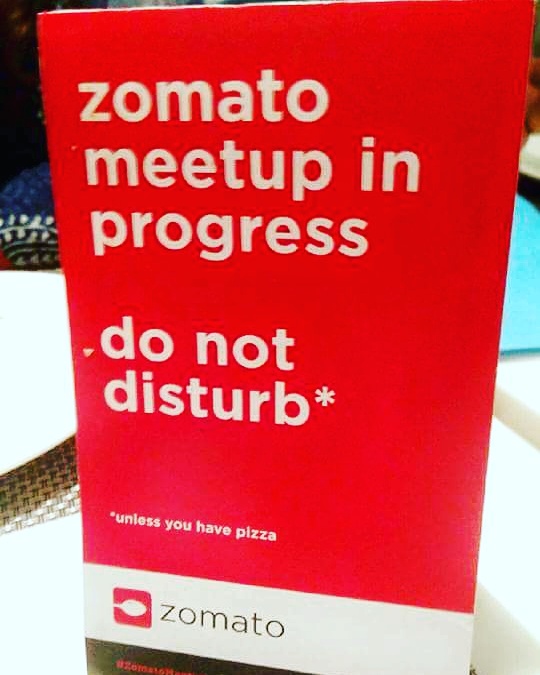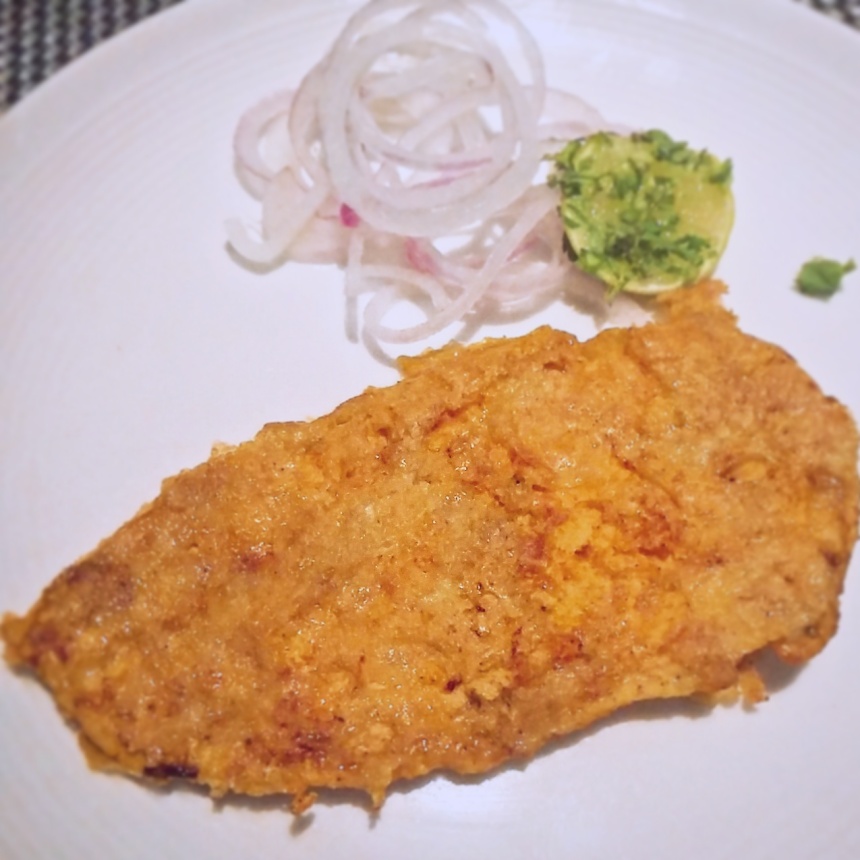After 15 days of holidaying out abroad, coming back to my country was a welcome change. What was more welcoming however, was getting an invitation to become a part of a respective set of the blogging community and attend a kind of food festival Kolkata has craved to savor.
The city of joy has been a melting pot of varied cultures . Look around and you’ll find a conglomeration of cuisines harmoniously blending in to perfection; creating a celebration of flavours in every Calcuttan’s mouth. And while the city only ends up raving about certain genres (like the Mughlai, the Dhakai or the Punjabi), it is Parsi cuisine that is the most underrated and the most flavorsome genre of them all. Over the past 1300 years ,Parsi cuisine has grown into a unique west coast Indian cuisine, still retaining flavors and techniques from ancient Persia, like a slice of history on your plate. My only tryst with this genre honestly has been in various outlets of a franchise called the SodaBottleOpenerWaala, or scores of Iranian bakeries or cafes in and around Mumbai and Pune. Very few are aware that Kolkata too has a small little place likeMancherji’s that serves a fair share of Parsi cuisine, however the city could do with a lot more.
Therefore, if I am given an opportunity to preview a Parsi food festival before it’s launch to the general public, I would be a fool to not jump the gun! Blu at the Aauris hotel has always been known to pioneer unique food festivals in the city – be it reciting food verses with a wonder brunch, or blend in Shakespeare with salads – conjuring up a food festival dedicated to the nitigrities of Parsi cuisine comes as no surprise at all.
Curated by Chef Sujit Mondal, the spread promises to take you an authentic gastronomic adventure like never before. I was privileged to have a very dear friend Rukshana on board this fabulous meet. Being a Parsi herself, the anecdotes given by her on each dish enhanced our meal ten folds. Before you die of curiosity, this was what was served to us at dinner:

The Drinks:
I’ve never been a fan of Masala drinks so I skipped the lemonade and tasted the Shirley Temple instead. Parsi’s as we were told, have a thing for accompanying alcohol with their meals so was surprised to find a mocktail on the menu but….. anyway moving on.
An ideal shirley temple is traditionally made with gingerale and grenadine- both of which were sadly lacking and all I got was a raspberry flavoured drink. So I won’t go “hooray!” with that!
The starters were a hit favourite amongst all of us.
All three dishes- The Khaman Pattice, Crispy Chicken Farcha and The Scotch broth– had distinct flavours; not to miss out on while you’re attending the food festival.
The vegetarians will definitely go ga ga on the Khaman Pattice. The crispy layer of the potato pattice on the outside oozing with elements of coconut and ginger on the inside; served with a generous helping of the green chutney is a must have!
Coming to the non vegetarian delights, the look of the Crispy Chicken Farcha gives an instant connect to the Bengali Kobiraaji; only here the exterior wasn’t crispy as it’s namesake, however the marinated flavours within were an A +.
Perhaps the most filling of the starters was the Scotch broth. Don’t be confused with the inclusion of Scotch in a dish; it’s basically a kind of soup overloaded with the goodness of mutton and barley. This, in my opinion, would make a meal on it’s own if you are a light eater like me when it comes to dinner . Therefore be sure to make lots of space in your tummy!
The Main Course
The star dishes finally arrived with pomp and grandeur and we couldn’t wait to taste them. There was Tittori , Nariel Na Dudh Ma Radhelu Cauliflower, Patrani Machhiand Dhansak; each of which, manages to beautifully capture the imagination of every taste bud present in the room. They were accompanied with piping hot Naans and Steamed rice.
Being a non vegetarian, I would obviously opt for the Dhansak and Patrani Macchi.
While the Parsi wedding favourite – banana leaf wrapped steamed fish (Patrani Macchi) blends the gorgeous flavours of coriander, green chilli, mint and coconut chutney; the star of the show is the Dhansak. The succulent mutton pieces vegetables and toor dal cooked on slow flame with steamed rice was an instant mood lifter.
Ironically, as Rukshana points out, Dhansak is considered a funeral dish that is usually served on the 4th day of the mourning period at Parsi homes. So unless you don’t want to get killed, never ask for Dhansak in a Parsi household. You could get it in abundance out here though!
But jokes apart, what Rukshana points out is that it’s perfectly fine to demand Dhansak as a guest if it’s not made on any auspicious occasion or celebration. On those days the Dhansak is served without the Mutton / Chicken often with a Non Veg Pulao similar to a light Biryani.
Vegetarians don’t be disheartened for there is tremendous love for the vegetarian delights served at the festival to us. The Tittori ( lentils cooked with coconut milk and other vegetables) for me felt like a Parsi rendition of the Sambhar and I wasn’t quite impressed with it. What stole my heart was the Nariel Na Dudh Ma Radhelu Cauliflower. The perfect balance between the coconut milk, the spices and the soft cauliflower is a thumbs up!
Just Desserts
The best is saved for the last and in this case too there was no exception. We were served two favourite Parsi desserts- The wedding must have Lagan Nu Custard andMalido -the sweet offering made to the Gods at the Fire temple.
The Lagan Nu Custard is basically denser and moderately sweeter version of the caramel custard with loads of dry fruits and teams wonderfully with raspberry crush. There were only light drizzle of almonds on our rendition and I would seek the inclusion of more dry fruits on my next visit.
I always believed what is offered to eat in the name of faith is an epitome of calorie killing and I’m not wrong. The Malido is a total celebration in your mouth. There is ghee, there are fruits and nuts and there is total food porn! You cannot stop at just one!
This magnificent festival starts from June 24th and concludes on July 3rd. So there you go! All information given. There isn’t much time! Don’t tell me later I didn’t give you a heads up on this!
https://saltpinch.wordpress.com/2016/06/23/parsi-food-festival-at-blu-aauris-an-honest-experience/
Disclaimer: I was graciously invited by the Zomato team to be a part of their Bloggers meet and attend the preview of the Parsi Food Festival, at Blu: Aauris hotel, Kolkata. The following piece clearly denotes my overall dining experience and has nothing to do with any sort of promotional activity whatsoever. Whatever comes your way, take it with A Pinch of Salt!















